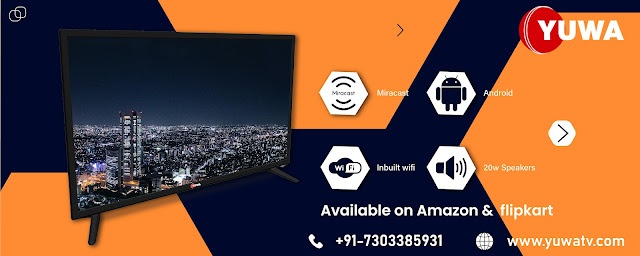BEARING DIFFERENCE BETWEEN 1080p AND 4K IN BEST SMART TV IN NOIDA
When
shopping for the best
smart LED TV in India, one of the first things you'll notice is the
resolution. The resolution is frequently slapped right on the box or even in
the model name. In the middle of the decade, 4K TVs began to take over the TV
market, quickly displacing 1080p as the most common resolution by the LED
TV Manufacturers. Almost every TV from a major manufacturer now has a
4K resolution, and finding 1080p TVs is becoming increasingly difficult, but
what are the differences between the two?
The
resolution of the display is referred to as 4k and 1080p. A 1080p television
has 1920 horizontal and 1080 vertical pixels, whereas a 4k television has 3840
horizontal and 2160 vertical pixels. Because 1080p refers to the number of
vertical pixels (1080) in the best
smart TV in India, but 4k refers to the number of horizontal pixels, it
can be confusing (3840). While the name implies that a 4k display conferred by Android
Television Manufacturers has four times the number of vertical pixels
as a 1080p display, the number of vertical and horizontal pixels on a 4k
display are both doubled. This does mean, however, that a 4k TV has four times
the total number of pixels as a 1080p TV.
Ø Availability of content
Streaming
platforms like Netflix, Amazon Prime, Disney+, etc. already contain 4K content also
Blu-rays players and gaming consoles started supporting 4K resolution in the best
smart LED TV in India which are consistent with 1080p for a long
time.
Regular
Blu-ray discs are 1080p, and 4k Ultra HD Blu-ray discs are now available, but LED
TV Companies in India they're a completely new format that requires you
to upgrade your Blu-ray player and buy new 4k Ultra HD Blu-ray discs.
In
the 2020s, 1080p TVs are becoming more difficult to come by, and they're
usually limited to small, entry-level models. Because 4k televisions are
typically by the Android
Television Manufacturers available in larger sizes, if you have limited
space and need a small TV, you'll most likely need to get a 1080p model.
Ø High Dynamic Range
HDR
(High Dynamic Range) began to gain popularity around the same time as 4K TVs.
While they are frequently marketed together, they have nothing to do with
resolution and instead refer to color and luminance. It enables content
creators to use a broader range of colors and luminance levels in their work.
It enhances image quality by producing richer, more vibrant colors. There are
various HDR formats by the LED
TV Manufactures, and some companies may promote 4k HDR, but just
because a TV supports it does not mean it looks good. However, because the vast
majority of 1080p TVs do not support HDR, opt for a 4k best
smart TV in India if you want to watch your favorite HDR content.
Ø Viewing Distance
Because
the human eye has a limit to what it can perceive, if you sit too far away from
your TV, you won't be able to see all of the image's detail. That means that if
you sit too close to a 4k TV, the image may appear to be the same as it would
on a lower-resolution screen. Essentially, if you sit close to a large screen of
best
smart TV in Noida, you'll notice a difference.
That's
not to say you won't notice a difference if you sit further away; it just won't
be significant. More information by the Android
Television Manufacturers on TV size and viewing distance can be found
here.
While
4k isn't going to help you much after a certain distance, it's always better up
close.





Comments
Post a Comment